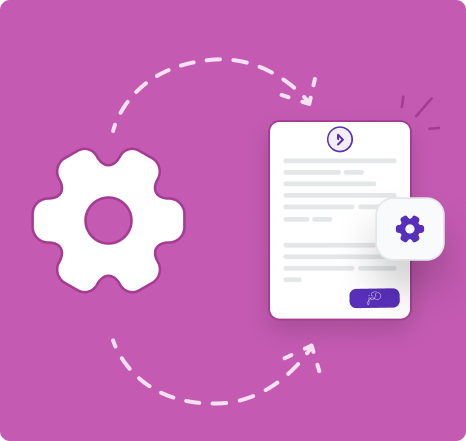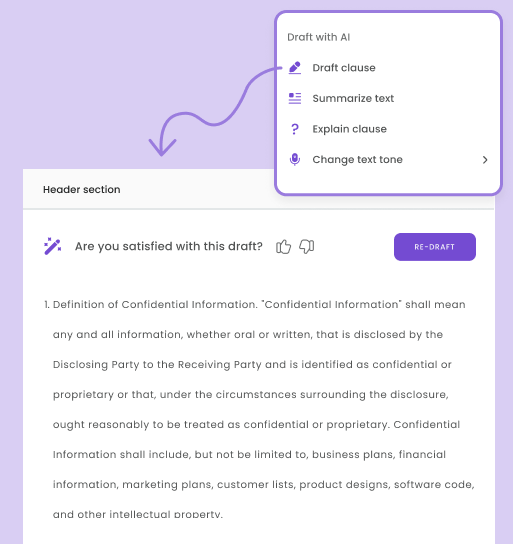Every business relies on processes. These can be created intentionally or unintentionally but they exist.
How do you get it right the first time and ensure the efficiency of the process?
That’s simple, process simulation.
In this guide, you’ll get a deep understanding of what process simulation is, the benefits it brings to the table, and the key steps to carry it out.
What is Process Simulation?
Process simulation is the creation of a virtual representation of processes, systems, or workflows. With process simulation, you can try different scenarios and simulate outcomes without affecting your operations. This allows you to check performance, find potential problems, and make changes in a controlled environment.
Purpose
The primary purpose of process simulation is to improve efficiency, reduce costs, and mitigate risks. You’re able to effectively enhance resource utilization, create better workflows, and look at the impact of certain outcomes before they happen.
You can take things a step further and model what happens when bottlenecks occur. These simulations provide actionable insights, facilitating better planning and decision-making.
Applications
The way process simulation is used depends on the industry but it has many applications.
For example, in the manufacturing industry, it’s used for production line design, assessing throughput, modeling different points of failure and how it impacts the production line, and more.
Logistics may use process simulation to model supply chain networks and subsequently optimize them to reduce delays. In the healthcare space, you may use it to better understand how to create spaces for optimal patient flow and determine where resources should be allocated. This can improve outcomes for patients.
The list goes on. Applying process simulation allows you to predict, plan, and eventually achieve better outcomes while cutting costs and time investment.
Key Concepts in Process Simulation
Modeling
A major concept in process simulation is modeling which is making accurate representations of processes that can be simulated and analyzed in different conditions. The key is that they need to be accurate or the results won’t be useful in the real world.
There are many models to choose from including
- Discreet event models: These models handle specific events and the sequence of events or actions that they’re composed of.
- Continuous models: They’re models look at events/processes as continuous flows.
- Agent-based models: These models look at the actions of individual pieces or entities (usually autonomous) within a system
Inputs and Variables
Inputs and variables determine how the simulation behaves. They vary depending on what you’re simulating and can include resources available, time, costs, constraints, and more. The more detailed the simulation, the more inputs and variables are required and the higher the demand for accuracy.
Scenarios and Experiments
This is the core of process simulation. Changing the inputs or variables in a process can help you determine how it’ll impact the entire process. For example, you may simulate the effect of adding a new production line or reducing delivery times in a logistics network. The experimentation makes it possible to identify various solutions, cut risks, and save time.
Outputs and Metrics
This is the information that you use to make a decision. Metrics are what you’re measuring and outputs are the values you get. Oftentimes, metrics include throughput, cycle time, resource utilization, etc. These help you understand how much output is produced, the time it takes, and how efficient it is. When you get these numbers, you can make data-backed decisions about whether the changes to the process were effective or not.
Benefits of Process Simulation
Risk Reduction
Process simulation allows you to test changes and explore scenarios without disrupting actual operations. This minimizes the risks associated with trial-and-error approaches in real-world settings. For example, before implementing a new assembly line configuration, a simulation can identify potential issues like equipment clashes or delays, enabling preemptive solutions. By providing a controlled environment for experimentation, simulations significantly reduce the likelihood of costly disruptions.
Efficiency Improvement
Simulations help identify bottlenecks, inefficiencies, and redundancies in workflows. By analyzing these insights, you can optimize processes to achieve smoother operations and higher productivity. For instance, in logistics, simulations can reveal how adjusting delivery routes impact overall turnaround times. This enables you to implement strategies that enhance resource utilization and streamline workflows for maximum efficiency.
Cost Savings
By avoiding costly errors and unnecessary changes, process simulation leads to significant cost savings. Simulations provide valuable insights that support informed decision-making, reducing the financial impact of poor choices. For example, in construction, simulating project timelines and resource allocation helps prevent budget overruns caused by delays or resource shortages. These savings can be reinvested to further improve processes.
Strategic Planning
Process simulation serves as a powerful tool for forecasting outcomes and supporting long-term planning. By modeling different scenarios, you can anticipate future challenges and opportunities, enabling proactive strategies. For instance, a retailer might simulate customer demand patterns to plan inventory levels for peak seasons. This ability to predict and prepare ensures that your organization remains competitive and resilient in dynamic environments.
Steps to Conduct a Process Simulation
1. Define Objectives and Scope
It always starts with understanding what you want to accomplish using SMART goals. In this case, those are SMART objectives. When you do this, you ensure the simulation is focused on what you find important and will help you uncover specific opportunities (or problems). It’s not useful to say you want to reduce errors in data. Instead, you may want to reduce data errors due to transferring from one system to another within the finance department by 30% within the next quarter.
2. Gather Accurate Data
This may be the most important part. Garbage data in will result in garbage data out. You need information about the resources used in the simulated process, key workflows, costs, time used, etc. The more accurate the data is, the more accurate your simulation will be. Of course, you’ll need to balance your efforts against the potential rewards.
3. Build the Simulation Model
You have an objective and the data. Now it’s time to model your process. Remember the three types of models mentioned earlier? It’s at this point you choose which one you’re going to use and the software that will be best for that type of modeling. Many tools can do this so just type ‘process simulation software for X. X is the type of modeling you chose. Once you’ve selected the tool, build the model with the data you have on hand.
4. Validate the Model for Accuracy
Run the model and then compare it to real-world data you have available. If you don’t have real-world data, compare it to what the expert opinions. Doing this allows you to be confident that the model is accurate. If it’s not accurate, you may have to tweak the values you’ve provided, rework your logic, or reassess your assumptions. Validation is critical for building confidence in the model’s predictive capabilities.
5. Run Simulations and Analyze Results
This is where it gets fun. Start running simulations and tweak the scenarios to see what happens. Analyze the results of each scenario to see the impact different inputs and variables have on your results.
Pay close attention to the metrics you identified previously like costs, cycle times, output, etc. If these metrics move in the direction you want then it’s a sign of a better process. If not, it may be a sign of a failed improvement and it’s time to change directions.
6. Implement Insights into Real-World Processes
Simulations are just that – simulations. That means you’ll eventually need to implement your insights into real-world processes. You may need to rearrange your workflows, allocate more resources, update equipment, try new strategies, etc. After making changes, you’ll want to pay attention to it for some time to ensure it produces the desired results.
Common Challenges in Process Simulation
Data Quality
The success of a process simulation heavily depends on the quality of the data used as inputs. Inaccurate, incomplete, or outdated data can lead to unreliable results, undermining the validity of the simulation. Ensuring data accuracy and reliability involves rigorous data collection and validation processes. For example, in a healthcare simulation, incorrect patient flow data could result in flawed resource allocation recommendations. Investing in data cleansing and verification is essential to build a solid foundation for your model.
Complexity
Balancing the level of detail in a simulation model with its usability is a common challenge. A model that is too simplistic may overlook critical nuances, while an overly complex model can become difficult to understand, maintain, and validate. Striking the right balance requires careful consideration of the simulation’s objectives and scope. For instance, simulating an entire supply chain may not require modeling every individual component, but rather focusing on key stages that impact performance.
Tool Selection
Selecting the right simulation software can be daunting given the range of tools available, each with different capabilities and features. The chosen tool must align with the complexity of the process, the required level of customization, and the technical expertise of the team. For example, a manufacturing process might benefit from discrete event simulation tools, while agent-based simulations in social systems may be better suited to a different tool. Poor tool selection can result in inefficiencies and limit the effectiveness of the simulation.
Interpretation of Results
Properly interpreting simulation results is critical to deriving actionable insights. Misinterpretation, such as overlooking key metrics or assuming causation from correlation, can lead to incorrect conclusions. Similarly, over-reliance on simulation outputs without considering real-world variables and uncertainties can result in flawed decision-making. Keep in mind that you should use simulation results as one component of a broader decision-making process. Incorporate expert judgment and external factors to ensure well-rounded conclusions.
Conclusion
Process simulation can be a powerful tool to test changes before disrupting real processes. At the same time, it can also be complex and difficult to manage without the requisite experience.
In this guide, you’ve learned what process simulation is, how it works, the benefits it brings, and much more.
If you want to try it out, it’s important to start small, test different tools, and work your way up so you can understand the nuances of simulating processes.




